Visualization
|
As mentioned above, a number of potential types of UX analyses output exist. I have included some visualization archetypes that are possible using generalized, hypothetical UXR scenarios. All below figures are representative of the my work, however, all data have been simulated and all specific details removed to preserve confidentiality.
International Product Feature Sentiment: An example UX scenario I have worked on previously is evaluating user sentiment for a key product feature. Once we know their baseline sentiment, I follow up to know why they felt that way. In this way, we know better where to iterate to improve product favorability. 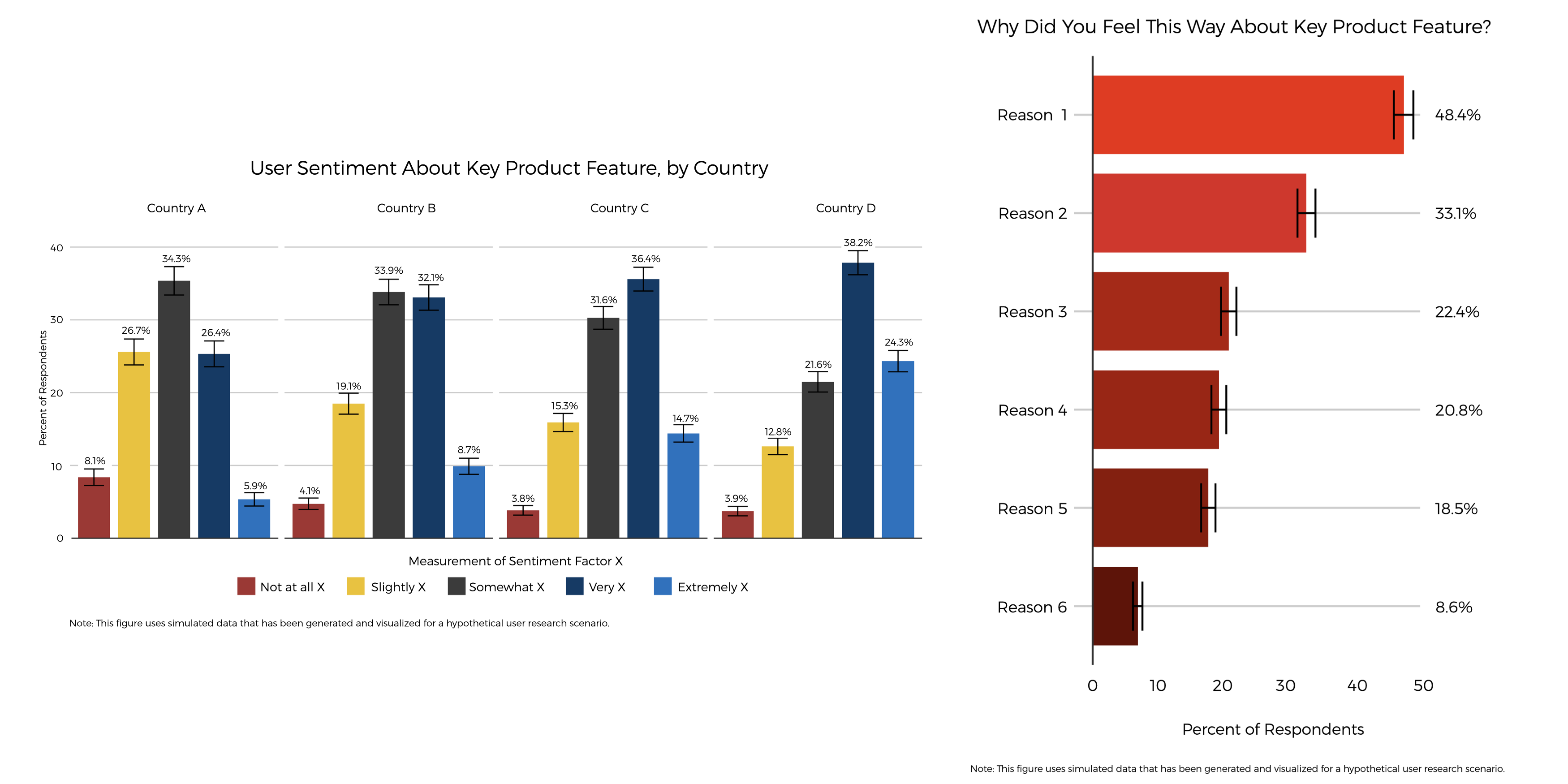
|
|
Top Pain Points for a Key User Group of Interest: I have also sought to better understand the top pain points for a given strategic user group so that product teams might develop features to grow and retain one or more strategic groups of interest. In this way, we can resolve user friction and improve the product experience.
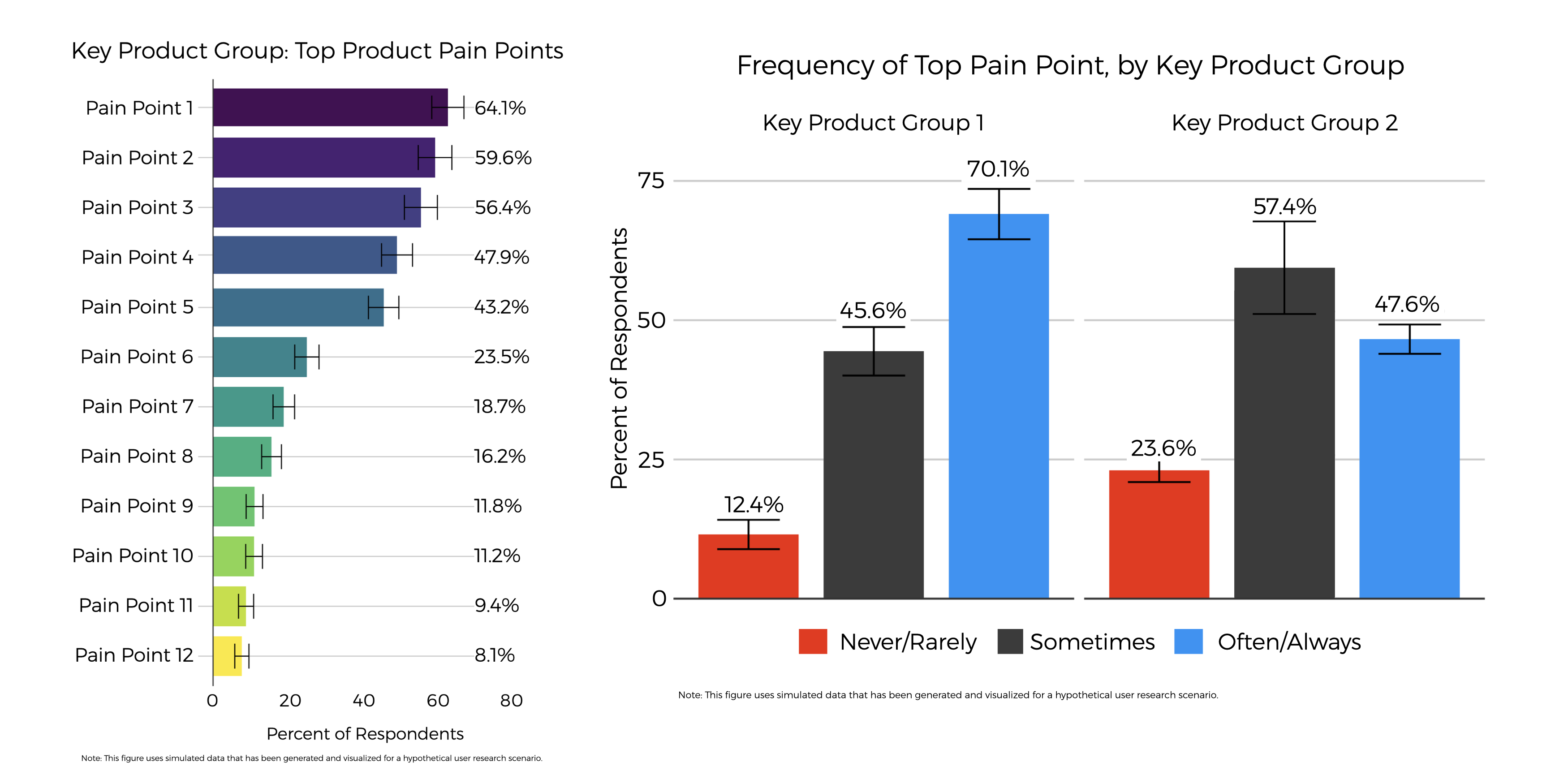
|
|
Barriers to Consideration, Barriers to Use: Similar to top pain points research, at times we would like to better understand what prevents a key user group from considering a product or product feature. What are their top barriers to consideration? If they would consider using a product but do not, what are their barriers to use?
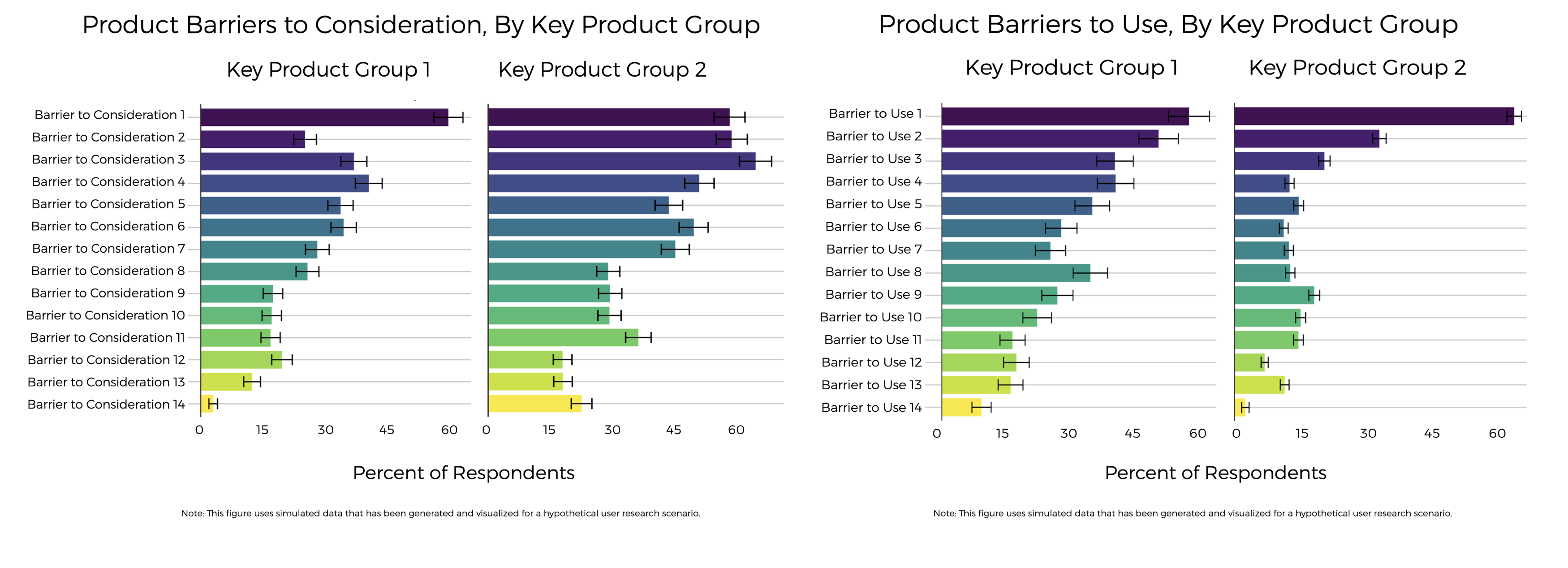
|
|
Top Use Cases for a Feature or Top Solutions to a Product Issue: Sometimes we are already aware of top pain points and barriers but we don't necessarily know how best to solve the issue among competing potential solutions. Here, we can run surveys to find the top option a key group wanted for an issue. Alternatively, we might want to know what use cases we should first support for an in-development product feature.

|
|
Foundational Understanding - Product Agnostic: Occasionally, rather than iterate on a given product, we might want to launch a new product or launch an existing product in a new market. To garner success, we need product market fit and a foundational understanding of existing user behavior and top use cases, so that we might build the optimal product experience. This type of research can also help prioritize where we should next launch a product.
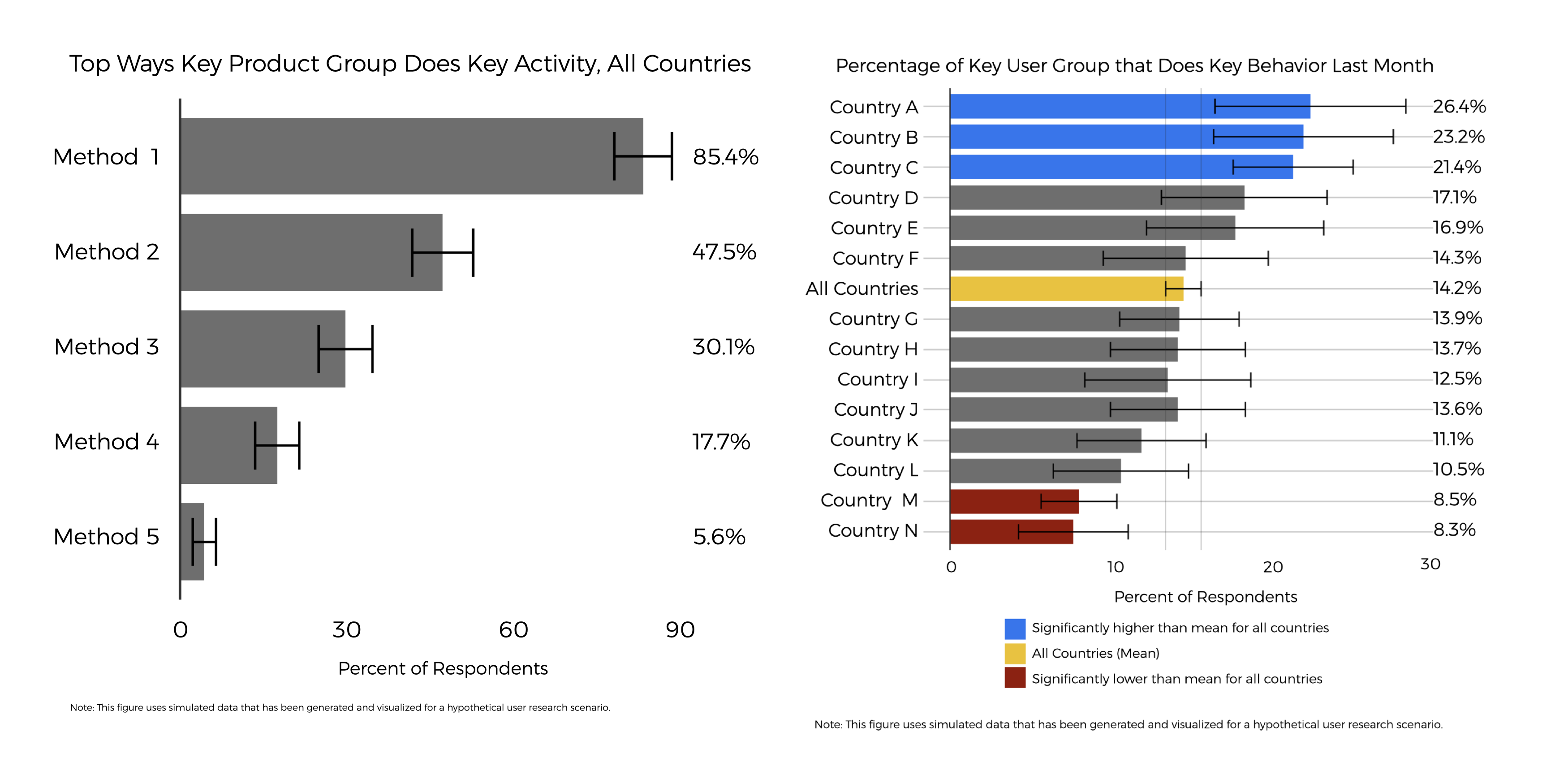
|
|
Top Predictive Features for a Key User Behavior: Another type of UXR we might want to perform is trying to better understand what characteristics best predict a desirable user behavior or user sentiment. For example, we might want to know what types of product content predict increased user engagement or improved user sentiment.
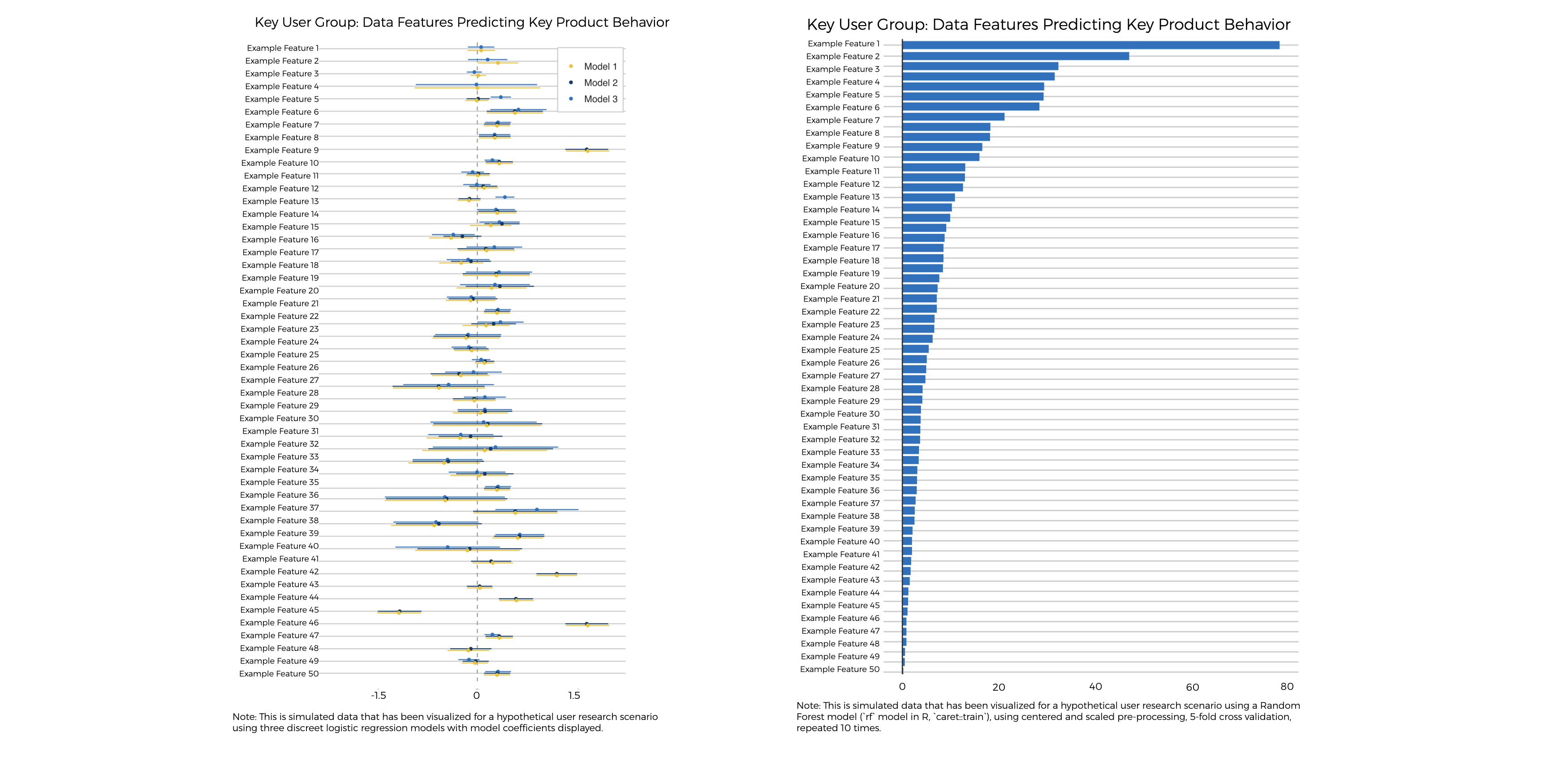
|
Deliverables
For quantitative UXR, my typical deliverables include both research decks and short notes or articles highlighting key product takeaways, recommendations, and insights. Depending on the study these might be very tactical recommendations or represent a larger strategic vision for where we should take the product or invest to maximize future success. I also document my code, queries, and other key details for reproducibility, if needed. Understandably, my UX research deliverables are all confidential, proprietary information. However, I have many open source or published papers, decks, and code from academic research, available in my portfolio as well as Github.